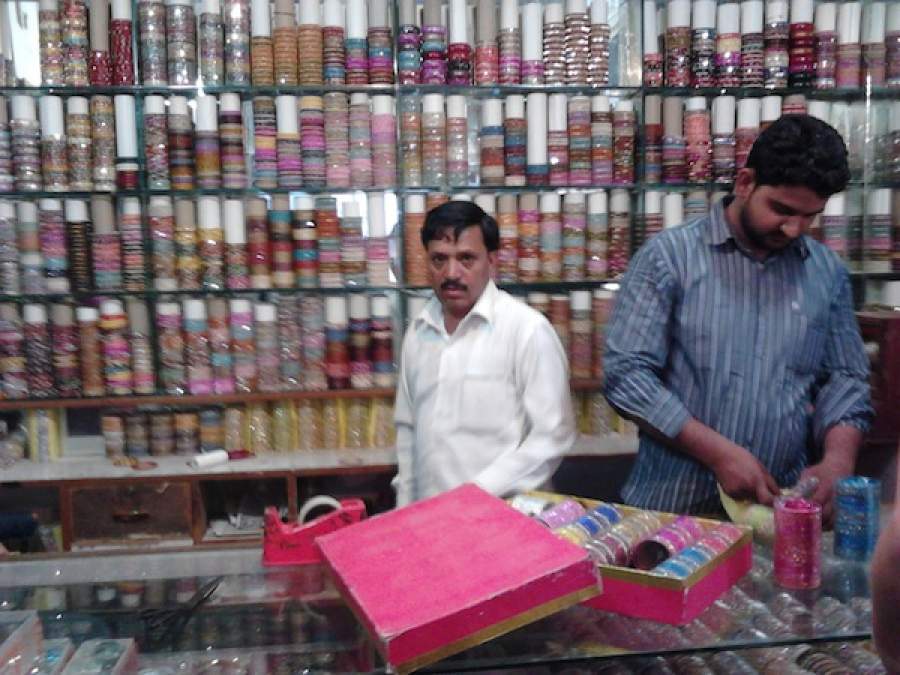In North America, bargaining for goods while shopping is pretty much unheard of. If I were to go to a shopping mall, pick up something I want and then proceed to tell the salesperson I only want to pay a certain amount for that item, I’m pretty sure I would either be laughed at or discreetly escorted out of the store. I wouldn’t be taken seriously, that’s for sure. But in India, the only way to be taken seriously while shopping is to haggle over prices. If you don’t, not only are you likely to get ripped off royally by shopkeepers with dollar signs in their eyes, but they’ll also enjoy a good laugh over an easy mark.
After seven or so months in India, I like to think my bargaining skills are improving. When I arrived, my inexperience was all too apparent. I didn’t know how to be assertive with shopkeepers, I felt awkward discussing prices, and I felt guilty negotiating because goods are already quite cheap in India, at least compared to home. When I couldn’t afford a named price, I was more likely to decline to purchase the item and then apologize, because well, I’m Canadian and I feel the need to say sorry excessively.
I’ve since learned the rules of the bargaining game, although I am still working on my execution. When I go shopping I need to “work myself up” or “get into the zone” and admittedly I don’t always have the energy to haggle ruthlessly with born-and-bred professionals. Nonetheless, I’ve compiled some tips for first-timers. Keep in mind the following if you ever find yourself in a bartering situation:
1. Do your homework.
It’s impossible to bargain without having an idea of what you should pay for a given item. If you’re still new to the country and you aren’t sure what you should pay, go shopping with someone who has a better idea. One general rule of thumb that foreigners are often told to go by in India is to pay around half of the seller’s original asking price—but sometimes even that is too high.
2. Lay the groundwork.
When I see something I want, I always try to fix a price in my head—what I think I should pay, reasonably—before approaching a shopkeeper. That way, when the shopkeeper names his price, I’m not swayed in one direction or another and I know how much work I have to do to get the price I want.
3. Negotiate.
Get comfortable, because the negotiation process can be lengthy. My first response to the seller’s figure is often honesty—if it’s more than I want to pay, I simply say, “I can’t pay that much. Can you offer a better price?” Sometimes the seller will drop the price a little bit, but the figure will usually still be too high. Be firm. The seller will tell you all kinds of tricks to try to convince you that it’s a good price. I’ve been told that I’m being offered a real “Indian price,” that the item is better quality than anything else I’ve bought for a similar price, and that I can easily afford it because of course, all foreigners have a lot of money. I usually combat these suggestions by explaining that I live in India, I know Indian prices and I make an Indian salary (all of which are true).
4. Walk away.
The best deals I have ever gotten were on items that I didn’t really care about. Why? Because I wasn’t afraid to walk away when the price was still too high. Faking indifference can be most difficult when you really like something, but it’s one of the best tactics you can use to get a better price. When the shopkeeper isn’t budging, be prepared to carry on your way. Most of the time, the shopkeeper will call you back to offer you a better price. When he doesn’t, it’s either because you’re a bad bluffer or your price is actually too low. Don’t be disheartened if you walk away without the object of your desire; most shops carry similar items and if you search around you might be able to find the same thing for a lower price.
5. Seal the deal.
Once a suitable price has been agreed upon, you can breathe easy. You’ll notice that after the bargaining process is over with, even the shopkeepers themselves will put on a different face, asking you where you’re from or joking with you. Remember that they are used to negotiating prices—it’s part of their job, as is making sure their customers are satisfied. You should always walk away feeling happy with your purchases and the prices you paid for them.

